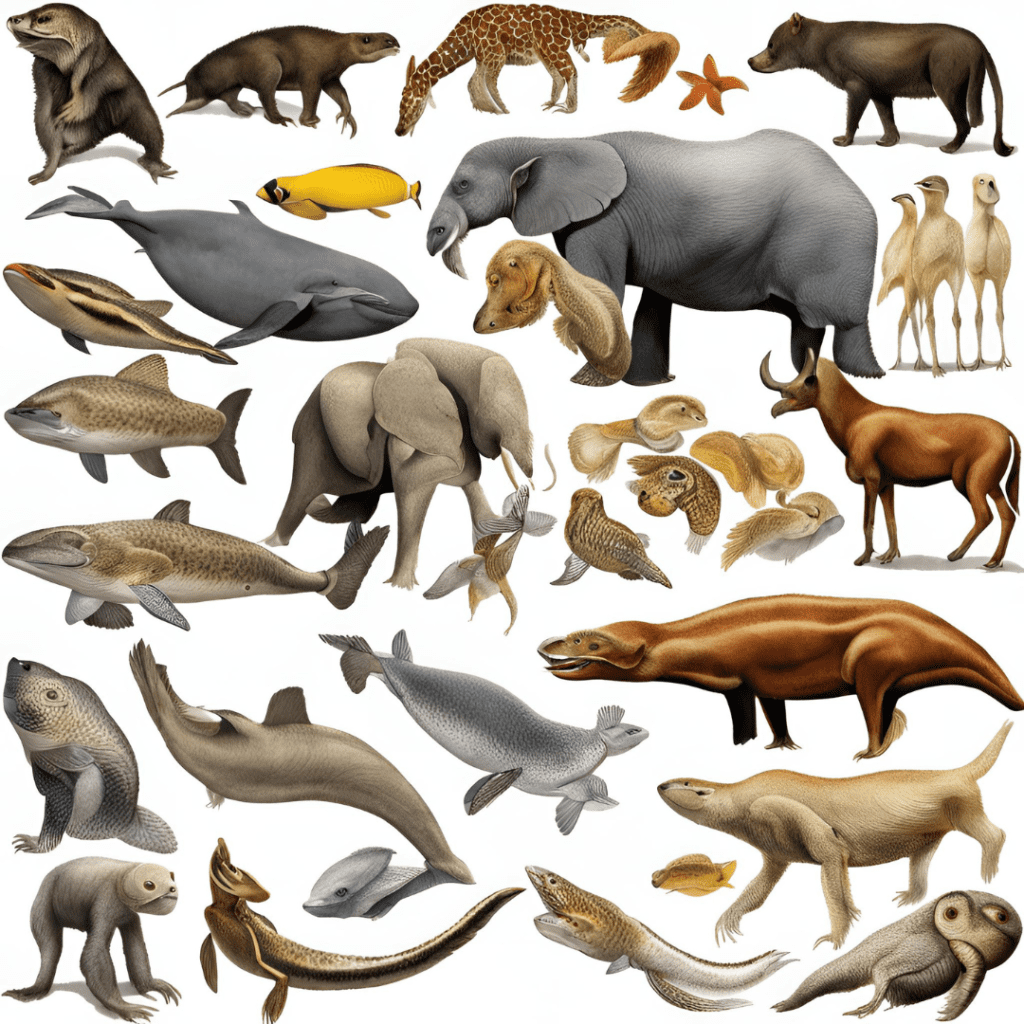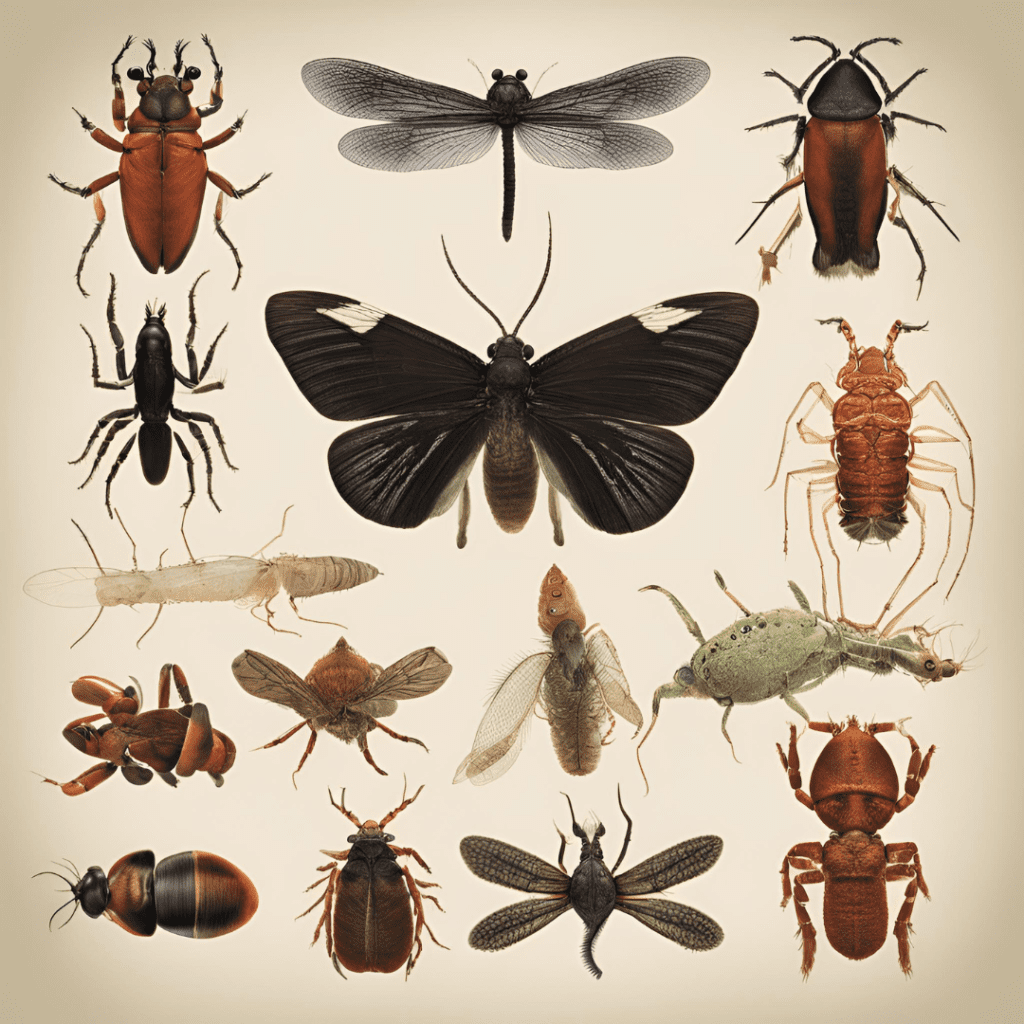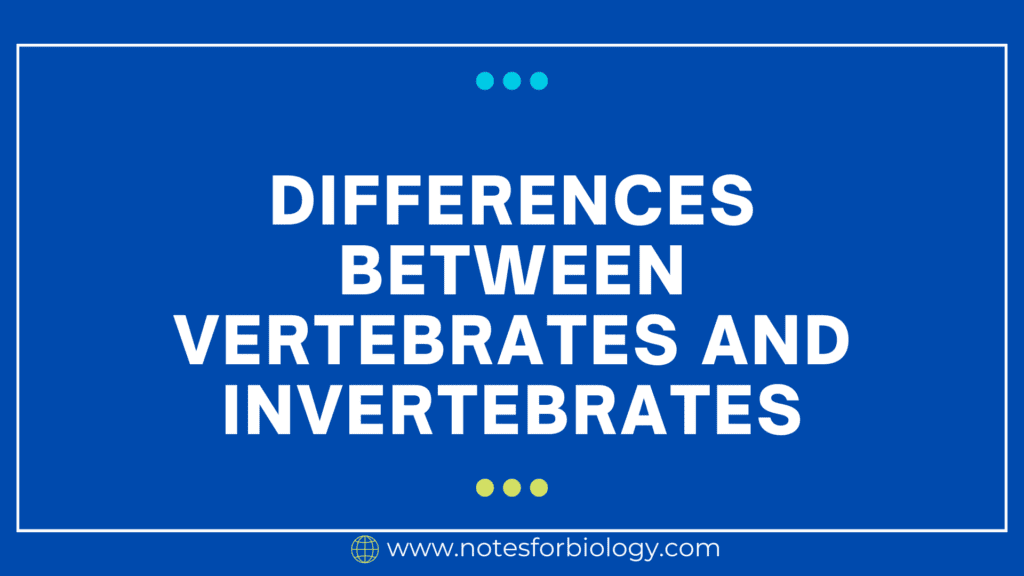There are two main categories of animals: vertebrates and invertebrates, each having unique traits. Examine the variations among these groupings, taking into account their responsibilities in the environment, reproductive techniques, and physical characteristics. Discover the wide range of species that make up each group and how they add to the ecosystems’ diversity on Earth.”
Table of Contents
Various differences between vertebrates and invertebrates are:
Vertebrates

Animals classified as vertebrates belong to the phylum Chordata’s subphylum Vertebrata. The vertebral column, or backbone, which is made up of individual vertebrae, is what distinguishes them. Across almost every habitat on Earth, from the highest mountain peaks to the ocean’s depths, vertebrates are among the most varied and extensively distributed species. The following are some essential traits and attributes of vertebrate animals:
The most distinctive feature of vertebrates is their backbone, also known as the vertebral column, which extends down the dorsal (back) side of the body. The spinal cord, a component of the central nervous system, is supported and shielded by the vertebral column.
Some main feature of vertebrates are:
- Internal Skeleton: The internal skeleton of vertebrates is mainly composed of bone or cartilage. In addition to protecting internal organs and provide structural support, this endoskeleton acts as muscle attachment sites.
- Bilateral Symmetry: Bilateral symmetry refers to the ability of most vertebrates to divide their bodies into two mirror-image halves along a central axis.
- Complex Organ Systems: Vertebrates have highly developed neurological, circulatory, respiratory, digestive, and reproductive systems, among other organ systems. In contrast to those of invertebrates, these systems are frequently more intricate.
- Closed Circulatory System: The circulatory systems of vertebrates are usually closed, meaning that blood is contained within vessels and is pumped by the heart. The body’s ability to efficiently move waste materials, nutrients, and oxygen around is made possible by this system.
- Reproductive Strategies: Vertebrates reproduce sexually, yet many species frequently undergo internal fertilization. They use a variety of reproductive techniques, including as oviparity, which involves depositing eggs, viviparity, which involves giving birth to live offspring, and ovoviviparity, in which eggs hatch inside the body.
Invertebrates
Animals classified as invertebrates are members of the large and varied class of organisms that lack a backbone or vertebral column. In terms of shape, habitat, behavior, and ecological roles, they are remarkably diverse and comprise the bulk of animal species on Earth.

Some features of invertebrates:
- Absence of Backbone: The lack of a vertebral column or backbone is the characteristic that most distinguishes invertebrates. Rather, alternative structural components like an exoskeleton, hydrostatic skeleton, or basic supporting tissues support their bodies.
- Body Symmetry: Invertebrates can have one of three symmetry patterns: bilateral (like insects), radial (like jellyfish), or asymmetric (like sponges). The numerous evolutionary routes that various groups of invertebrates have followed are reflected in this variability in body symmetry.
- Exoskeleton: Exoskeletons, or stiff external coverings consisting of calcium carbonate in mollusks and chitin in arthropods, are present in many invertebrates. In addition to provide protection and support, the exoskeleton acts as a point of attachment for muscles.
- Soft bodied Forms: Some invertebrates have soft bodies without a stiff outer covering, whereas others have hard exoskeletons. These mollusks, jellyfish, and worms are examples of these soft-bodied creatures.
- Segmentation: Certain invertebrates have segmented body plans, including annelids (like earthworms) and arthropods (like insects). Movement, body area specialization, and evolutionary diversification can all be aided by segmentation.
16 Differences between Vertebrates and Invertebrates
The 16 differences between vertebrates and invertebrates are:
| Characteristic | Vertebrates | Invertebrates |
| Backbone | 1. A vertebrate is an animal that has a backbone or spinal column. | 1. An invertebrates are an animal that do not have backbone or spinal column |
| Skeleton | 2. They have an internal skeleton | 2. Internal skeleton is absent. |
| Heart located | 3. They have heart on the ventral side of body. | 3. They have heart on the dorsal side of body. |
| Limbs | 4. They have two pairs of limbs. | 4. They have three or more pairs of limbs, if presents. |
| Nerve cord | 5.They have dorsal and hollow nerve cord | 5. They have ventral and solid nerve cord. |
| Brain | 6. They have well-developed brain protected by skull. | 6. They have lack of well-developed brain. |
| Sensory organ | 7. They have advance sensory organ. | 7. They have simple nervous system. |
| Metabolic | 8. They have high metabolic rates. | 8. They have lower metabolic rate compared to vertebrates. |
| Immune system | 9. They have advance immune systems. | 9. They have lower immune system compared to vertebrates. |
| Body temperature | 10. They have ability to body temperature regulation ability. | 10. They are reliance on external environment. |
| Reproductive system | 11. They have complex reproductive system. | 11. They have varied reproductive strategies. |
| Muscular system | 12. They have develop muscular system. | 12. They have less developed muscular system. |
| Mobility | 13. They have high level of mobility. | 13. They have low mobility ability compared to vertebrates. |
| Circulatory system | 14. They have close circulatory system. | 14. They have open circulatory system. |
| Level of cephalization | 15. They have level of cephalization. | 15. They have lower level of cephalization. |
| Examples | 16. Fish, birds and mammals are the example of vertebrates. | 16. Insects, worms, jellyfish are the example of invertebrates. |
Frequently Asked Question (FAQ)
What is vertebrates and invertebrates?
Animals distinguished by having a spinal column to support and shield the spinal nerve. Fish, birds, amphibians, reptiles, and mammals are animals classified as vertebrates
Those creatures lacking a spinal column. This broad category consists of creatures including mollusks, spiders, worms, insects, and jellyfish, are invertebrates.
Differences between vertebrates and invertebrates?
Vertebrates have a well-developed internal skeleton with a backbone, but invertebrates lack both a backbone and an internal skeleton composed of bone. Vertebrates usually exhibit bilateral symmetry and have more complicated neural systems and reproductive methods than invertebrates, which typically have simpler neurological systems, a variety of reproductive techniques, and varying body symmetry. While vertebrates comprise well-known categories including fish, birds, amphibians, mammals, and reptiles, invertebrates make up the majority of animal species and vary widely in size.
Related article

